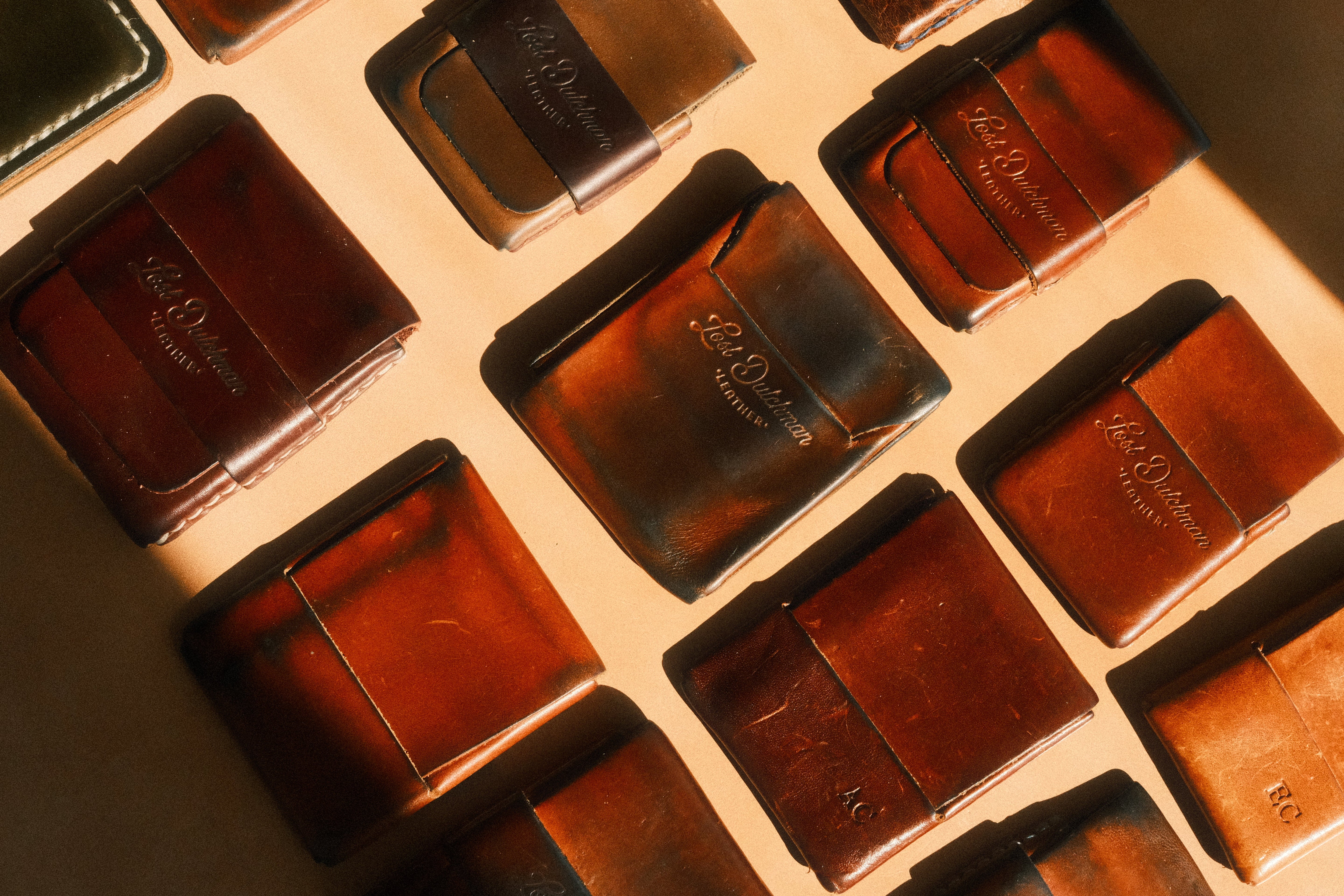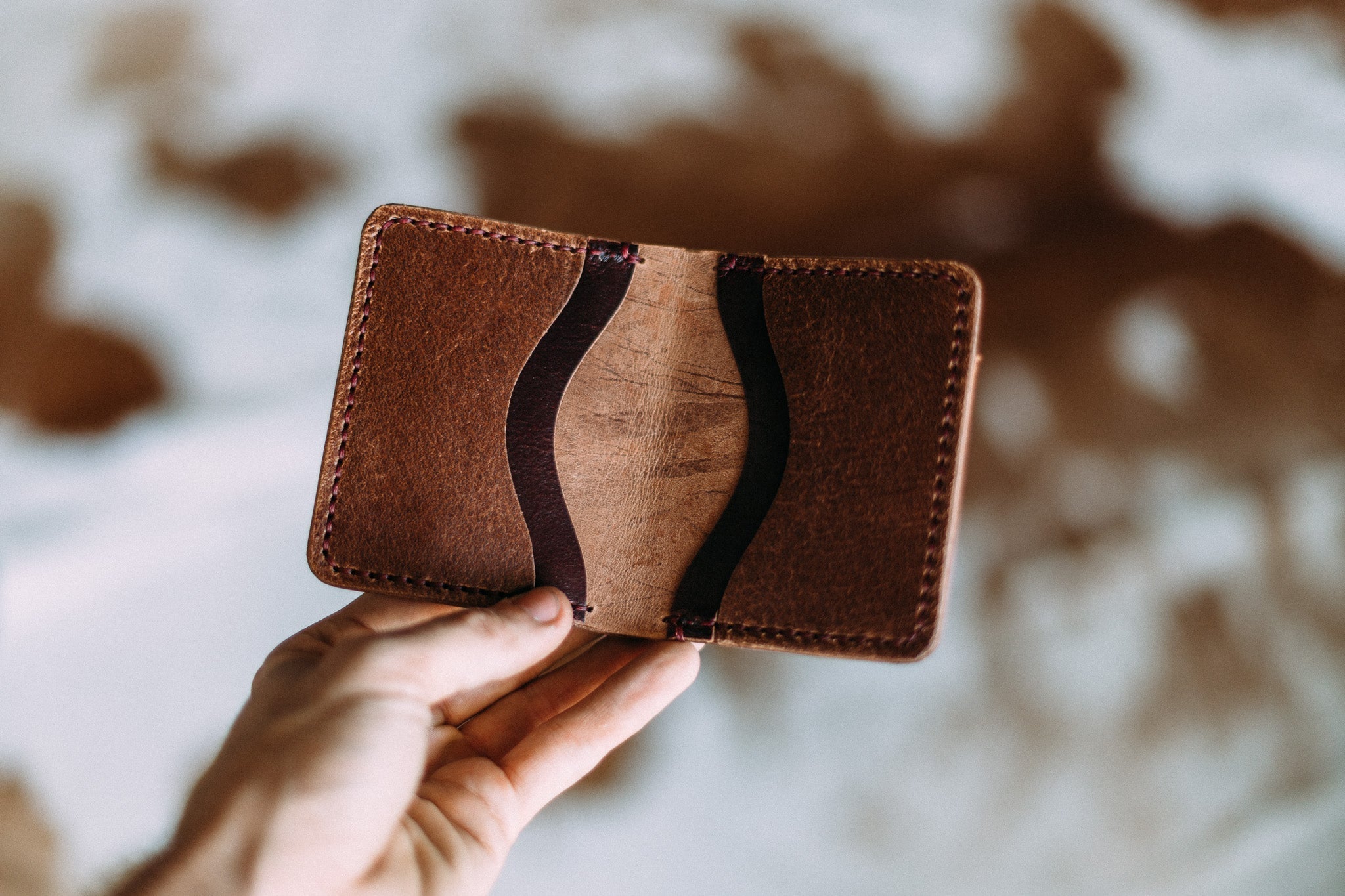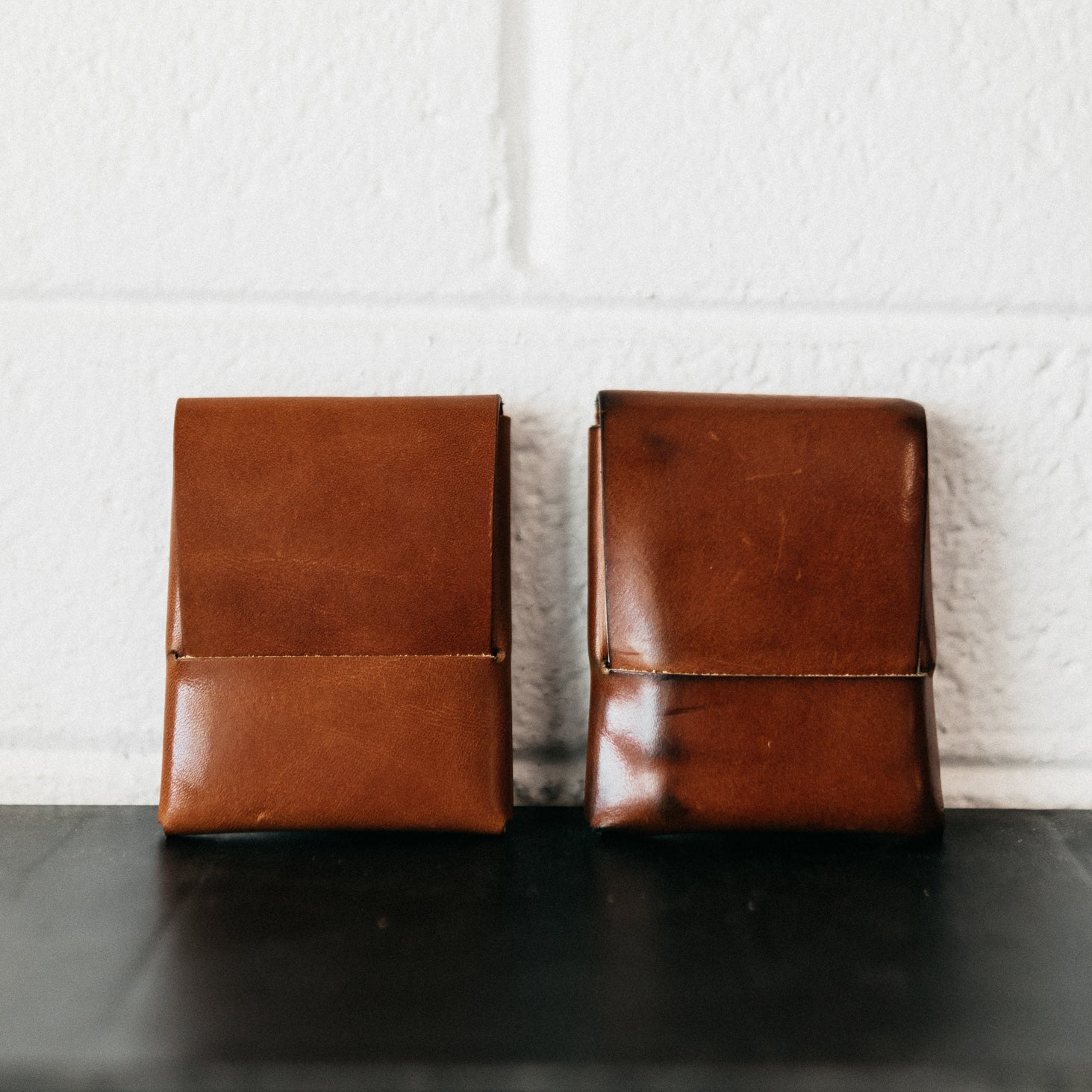
How to Spot a Quality Leather Wallet
A wallet is one of the most personal items you carry. It’s with you every day, whether you’re paying for a morning coffee, pulling out a business card, or keeping essential IDs close at hand. That’s why the quality of your wallet matters. A flimsy wallet cracks, peels, and frustrates. A genuine leather wallet, on the other hand, becomes part of your life story. It grows softer, richer, and more beautiful with use, developing a patina that reflects the years you’ve spent together.
But here’s the challenge: not all “leather” wallets are created equal. Many are made of bonded scraps or even synthetic imitations. They might look convincing when new, but fail within months. Learning the signs of craftsmanship and identifying fake leather will help you make an investment that lasts for decades, not months.
This article will give you a clear framework for spotting a quality leather wallet, from understanding grades of leather to evaluating stitching, design, and even how a wallet smells and feels.
The Foundation of Quality: Understanding Leather Grades
Every wallet begins with leather, and the grade of that leather is the foundation of quality. The grade refers to which layer of the hide is used and how it’s treated.
Full-Grain Leather: The Benchmark of Excellence
This is the highest quality leather you can buy. Full-grain leather comes from the top layer of the hide, retaining the natural grain, fibers, and markings. Those subtle scars and imperfections are not flaws; they’re proof of authenticity.
-
Strength: Dense fibers make it resistant to stretching and tearing.
-
Longevity: Instead of wearing out, it develops a patina, a sheen and depth of color unique to your wallet.
-
Character: Like fingerprints, no two pieces are exactly alike.
A full-grain genuine leather wallet is an heirloom in the making. It may feel stiff at first, but it will soften and mold to your hand and pocket over time.
Top-Grain Leather: Smooth and Stylish
Top-grain is also cut from the upper layers of the hide but is sanded or buffed to remove natural blemishes.
-
Appearance: Sleek and uniform, with a more polished finish.
-
Durability: Still strong, though slightly less robust than full-grain.
-
Audience: Ideal for those who prefer refinement over rugged character.
Genuine Leather (Vague and Misleading)
Here’s where things get tricky. The term “genuine leather” is often used in marketing, but it doesn’t necessarily mean high quality. It can include lower-grade hides, heavily processed materials, or even bonded leather.
If a wallet is simply labeled “genuine leather” without specifics, it often signals a budget product. This is where identifying fake leather becomes crucial.
Corrected-Grain and Bonded Leather: The Pretenders
Corrected-grain leather is heavily treated, often with an artificial grain pressed into the surface. Bonded leather is worse; it’s made from shredded scraps glued together.
Both may look fine at first glance, but they lack the integrity to last. Within a year or two, they peel, crack, or fall apart.
Craftsmanship: The Invisible Signature of Quality
Even the best leather can be ruined by poor craftsmanship. A wallet’s construction is where you’ll find the artisan’s signature, the small details that reveal whether it was built to last.
Stitching: The Backbone of Durability
Look closely at the seams. High-quality stitching is:
-
Even: Consistent spacing without wobbling.
-
Tight: No loose threads or gaps.
-
Reinforced: Corners and stress points show extra attention.
The strongest wallets are hand-stitched using the saddle-stitch method. Two needles lock each stitch in place, making it nearly impossible to unravel. Machine-stitched wallets, in contrast, can unravel completely if a single thread breaks.
Example: The Dutchman Wallet showcases meticulous saddle stitching that guarantees years of use.
Edge Work: The Silent Detail
Edges reveal whether shortcuts were taken. In a well-crafted wallet:
-
Edges are burnished smooth or carefully painted.
-
There are no rough, fuzzy fibers.
-
The finish feels polished but not plastic.
Cheap wallets often cover edges in a glossy synthetic seal that cracks with use. True craftsmanship ensures edges age gracefully along with the rest of the leather.
Functional Design: A Wallet That Works for You
A wallet is more than leather and stitching, it’s a tool. Design plays a key role in whether it becomes a joy or a burden.
Layout and Organization
Ask yourself:
-
Do you carry mostly cards or cash?
-
Do you need multiple compartments, or do you prefer minimalism?
-
For simplicity, The Franklin offers a stitch-less, minimalist design that slips easily into a front pocket.
-
For balance, the Vertical Dutchman combines traditional bifold functionality with a slim profile.
Proportions and Comfort
A quality wallet feels balanced, not bulky, not flimsy. It should fold cleanly and sit comfortably in your pocket without creating awkward bulges.
Using Your Senses: Identifying Fake Leather
Your eyes, hands, and nose are powerful tools for spotting authenticity.
-
Sight: Genuine leather has natural variations; fake leather shows repeating patterns.
-
Touch: Real leather feels warm, textured, and supple. Fake leather is often overly smooth or plasticky.
-
Smell: A genuine leather wallet carries an earthy, organic aroma. Fake leather smells chemical or synthetic.
-
Flex: Bend the wallet. Real leather wrinkles slightly like skin; fake leather resists or creases unnaturally.
Learning these cues makes identifying fake leather much easier, even before you look at stitching or labels.
The Price Perspective: Why Cheap Isn’t Cheap
If a wallet claims to be “authentic” but is priced like a fast-fashion accessory, alarm bells should ring.
High-quality materials and skilled labor cost money. A well-made wallet is not meant to be disposable. Consider cost-per-use:
-
A $30 wallet that lasts a year = $30/year.
-
A $200 wallet that lasts 10 years = $20/year.
Quality pays for itself, not only financially but also in satisfaction. That’s why our bifold collection emphasizes durability; it saves you money and frustration in the long run.
Labels, Origins, and Transparency
Legitimate brands are proud to state exactly what their wallets are made from. Look for labels like:
-
“Full-grain leather”
-
“Vegetable-tanned leather”
-
“Hand-stitched”
Vague terms like “genuine leather” or “real leather” without clarification are warning signs.
Transparency also matters. Brands like Lost Dutchman Leather share their sourcing and methods openly. If a seller hides this information, they may be cutting corners.
Caring for Your Investment
Even the finest genuine leather wallet needs care. Fortunately, it’s simple:
-
Conditioning: Apply leather balm every few months to prevent drying.
-
Moisture: If it gets wet, let it air dry naturally; never use direct heat.
-
Storage: Keep it in a cool, dry place when not in use.
This small effort ensures your wallet ages gracefully, developing the rich patina that makes it uniquely yours.
Bringing It All Together: Defining a Quality Wallet
Spotting a quality wallet means knowing what to look for and trusting your senses. The grade of leather, the precision of stitching, the finish of the edges, and the way it feels in your hand all tell you the truth.
The right wallet doesn’t just hold money, it holds history. From the minimalist elegance of The Franklin to the robust dependability of The Dutchman, a true, genuine leather wallet is an investment in something that will stay with you for years.
If you’re ready to make that investment, explore our wallet collection and find the piece that matches your style and your story. And if you’d like expert guidance, you can always get in touch; we’re happy to help you select a wallet that will be as dependable as it is beautiful.


